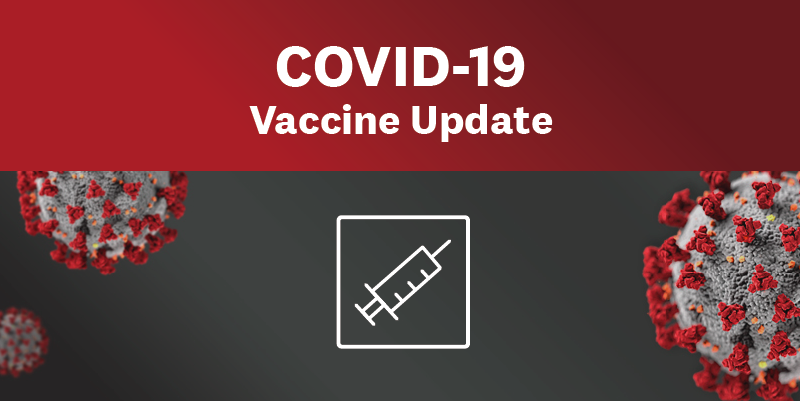

AUSTIN, Texas – Austin Public Health (APH) encourages preventive measures including updated COVID-19 pediatric booster recommendations as epidemiologists continue to monitor several upper respiratory virus outbreaks throughout Austin-Travis County.
Young children and older adults are at a higher risk of experiencing serious illnesses if they contract COVID-19, flu, and RSV. Five adults in Travis County and five children in Texas have died from flu-related complications already this season. There have been 22 COVID-19-related deaths reported since October 1. It is necessary to take steps to help protect those who are most vulnerable this winter.
Updated COVID-19 pediatric booster recommendations
Young children, ages 6 months through 5 years, who previously completed a Moderna primary series are now eligible for a Moderna bivalent booster two months after their final primary series dose. Children 6 months to 4 years who are currently completing a Pfizer primary series will get a Pfizer bivalent vaccine as their third primary dose. Children in this age group who’ve already completed their three-dose Pfizer primary series aren’t yet eligible for an updated booster. The Food and Drug Administration (FDA) reports that data supporting updated boosters for this population is expected in January.
"Vaccine coverage among children remains far below the level we’d like to see," said Dr. Desmar Walkes, Austin-Travis County Health Authority. "Please help protect your family from serious complications that can be caused by these vaccine-preventable diseases."
Young children became eligible for their primary COVID-19 vaccine series in June. The APH Immunizations Unit’s research team estimates only about 11.3% of young children (6 months - 4 years, 11 months) in Austin-Travis County have completed their primary series. Children 5 to 11 years became eligible more than a year ago and APH estimates only about 38.5% have completed their primary series. This age group has been eligible for updated boosters since October.
Everyone 12 and older has been eligible for updated boosters since September, and the Centers for Disease Control and Prevention (CDC) reports only about 17% of people in Travis County have gotten the booster. The updated booster offers broader protection against COVID-19 and some of its omicron subvariants including BA.4 and BA. 5. Right now, wastewater monitoring indicates both are circulating in our community.
COVID-19 Community Level vs community transmission
The CDC lists Travis County’s Community Level as low, however, one of the contributing factors—case rate per 100,000—is well above 100 again. COVID-19-related hospital admissions were up to 6.6 last week from 4.6 the previous week. These are among the COVID-19 indicators used to assess the overall strain on hospital systems. Community Levels help guide recommendations in non-healthcare settings, but community transmission is a metric healthcare settings monitor. Transmission refers to the spread of COVID-19 in a community and can be a precursor to elevated Community Levels.
When community transmission is high, as it currently is in Travis County, the CDC recommends masking for everyone in healthcare settings where they could encounter patients. As a reminder, per APH guidelines, you may choose to wear a mask at any time as an additional precaution to protect yourself and others.
Flu-like activity very high in Texas
Visits to healthcare providers for flu-like illnesses in Travis County have exceeded rates observed in previous years. The most recent data available (Week 49) shows a 15.5% flu positivity rate in Travis County. At least 12 flu-associated outbreaks have been reported in Travis County schools so far. Seasonal flu shots are recommended for everyone 6 months and older.
"Please consider that you’re likely getting together with friends and family who may be at increased risk for serious complications from these illnesses over the holidays," said Adrienne Sturrup, APH director. "If you’re feeling sick, send your love and stay home."
Vaccine Providers
Visit Vaccines.gov (Vacunas.gov in Spanish) to find flu and COVID-19 vaccine providers near you.
Free COVID-19 tests
NEW: Free mail-order rapid antigen test kits are available once again through covid.gov/tests. Households are eligible for another round of four tests for a limited time.
At-home COVID-19 test kits are available at APH Neighborhood Centers while supplies last. The U.S. Department of Health and Humans Services also lists community-based testing sites online.
Free masks (N-95 respirators)
Use the CDC’s mask-locator tool to find pharmacies near you that provide free masks (N-95 respirators). It does not show current inventories, so check with the location for availability.
Media Toolkit
APH has compiled health and safety messaging for the upcoming holiday season. Access the media toolkit and help us share best practices to mitigate the spread of illnesses.

About Austin Public Health
Austin Public Health is the health department for the City of Austin and Travis County. Austin Public Health works to prevent disease, promote health and protect the well-being of all by monitoring and preventing infectious diseases and environmental threats and educating about the benefits of preventative behaviors to avoid chronic diseases and improve health outcomes.

